THE ORTHODONTIC CENTER IN AIRDRIE, AB
- We are committed to providing you with the best experience.
- NO-COST consultations
- Availability for late hours and weekends
Invisalign
Early And Interceptive Orthodontics For Children
Early orthodontic evaluations by an Airdrie dentist might help prevent later, more complex orthodontic requirements. Teeth and jaws can be adjusted using Phase One or Interceptive braces to help your child form a healthy bite as they grow.
Invisalign For All Ages 6 - 80 Years
Clear, removable aligners require little maintenance. Simply take them out to eat, floss.
Looking For An Orthodontic Provider In Airdrie?
Invisalign trays are great for people who do not want others to notice that they are wearing braces because they are nearly invisible.
At Airdrie Springs Dental, we provide Invisalign for adults, teenagers and children. Call us to schedule your free Orthodontic Consultation now!
Here at our family dental practice, Airdrie Springs Dental, we provide orthodontics and braces for adults, teenagers, and children. You can choose from the full selection of braces options that we offer.
What are braces and how do they work?
Braces are used to correct crooked teeth. Unlike traditional ones, braces do not attach to the teeth themselves, but rather to the gum line of your mouth. They typically take about nine months to fully straighten crooked teeth.
How do braces work?
Straightening your teeth takes place by applying consistent and designed pressure on your teeth. This pressure can be from a physical wire, or in the case of invisible braces, from a tightening of the gum tissue around your teeth. This pressure gradually changes the shape of your smile over time, so that it is no longer crooked and can function properly.
Types of Orthodontic Braces
Invisalign is suitable for a variety of dental conditions. These include:
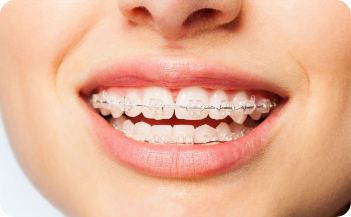
Ceramic Braces
Ceramic or clear braces are orthodontic appliances used to straighten teeth and correct bite issues. They are made out of rubber bands and clear or tooth-colored wires that are affixed to the surface of your teeth, giving them more discretion.
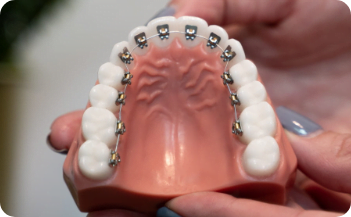
Lingual Braces
These include placing orthodontic brackets on the interior surface of teeth.
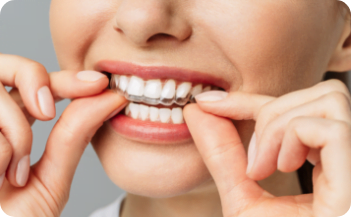
Clear aligners like Invisalign
Clear aligners/ Invisalign are orthodontic appliances that are a clear plastic alternative to traditional braces that are used to straighten teeth.
Benefits of Wearing Dental Braces
A straight, evenly spaced smile can lower your chances of:
- dental decay
- gum disease
- TMJ dysfunction
- deteriorated, fractured, chipped, and restored teeth
Your teeth can function more effectively the better they can occlude (bite) together. You’ll find it simpler to maintain and clean your smile if there is less crowding or misalignment.
Which braces in Airdrie are the best for you? Contact one of our Airdrie dentists to schedule an appointment.
What type of patient is a good candidate for orthodontics braces?
Patients with the above-mentioned problems are good candidates for orthodontic braces.
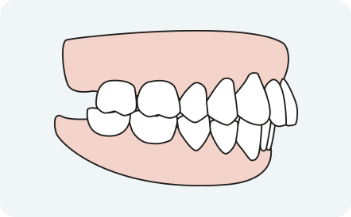
Overbite
This occurs when your top teeth are too far forward, sometimes pressing against the lower jaw.
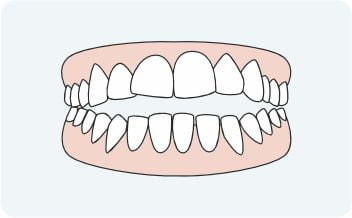
Open bite
In this case, the bottom teeth may be spaced too far apart. This can lead to problems with chewing food.
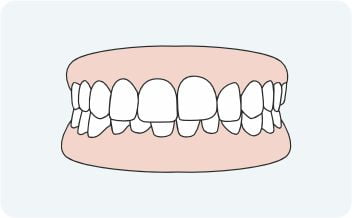
Deep bite
This occurs when the teeth are overhung or protrude in front of the upper jaw.
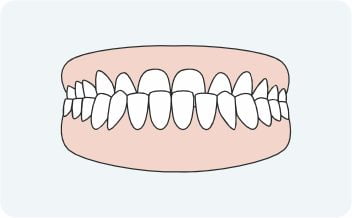
Underbite
Underbite and overbite can coexist in the same patient depending on the severity of the malocclusion.
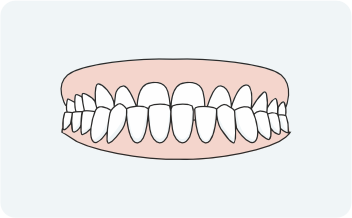
Reverse bite
Underbite and overbite can coexist in the same patient depending on the severity of the malocclusion.
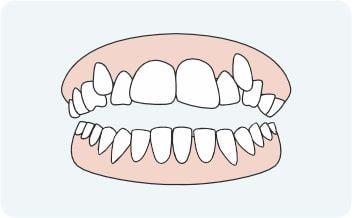
Crooked teeth
Straightening crooked teeth may require multiple appliances to resolve, especially in cases where there are a lot of tooth issues involved, such as a deep bite or crossbite.
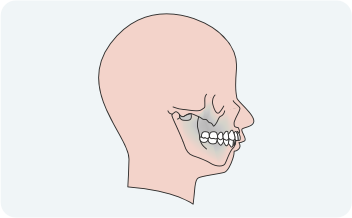
Jaw problems
Underbite and overbite can coexist in the same patient depending on the severity of the malocclusion.
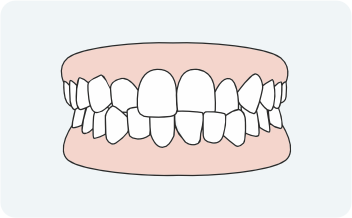
Misaligned
Orthodontic appliances can be used to fix teeth that are not aligned properly.
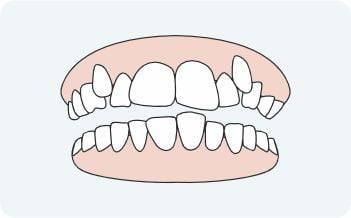
Overcrowded teeth
Orthodontic treatment may be recommended to correct overcrowded teeth.
How long does orthodontic treatment take?
The length of orthodontic treatment varies for each patient. The best way to determine how long it will take is by visiting an dentist.
Why Choose Airdrie Smiles Dental for Your Orthodontic Procedure
The worldwide symbol of kindness, comprehension, compassion, and joy is a smile.
Right here in our Airdrie dental clinic, Airdrie Springs Dental has the team members and training to offer braces to our patients. By doing this, you can avoid having to visit other, unknown providers. Are you ready to find out more about achieving a straighter, younger-looking smile? Call our Airdrie Springs Dental office right away to schedule an orthodontic consultation.
How to find dentist for orthodontic procedure in Airdrie, Alberta
01
Step 1:
Get recommendations from family and friends
02
Step 2:
Research for Airdrie dentists in your area online
03
Step 3:
Check for years of experience
04
Step 4:
Check for testimonials, including before and after photos of patients
05
Step 5:
Visit a local Airdrie dentist’s office
FAQs on Orthodontic Treatment
Orthodontic treatment can cause some discomfort and soreness, especially when braces are first placed or tightened. However, this usually goes away within a few days. Over-the-counter pain relievers can help to manage any discomfort.
During active treatment, you will typically need to visit your orthodontist every 4-6 weeks to have your braces or aligners adjusted. This allows your orthodontist to monitor your progress and make any necessary adjustments to your treatment plan.
You will double your daily treatment time if you only wear your invisible aligners at night., For example, a treatment plan that you were supposed to finish in a year has suddenly grown to take two years, and maybe much more, if you don’t wear the aligners during the daytime
While you can still eat most foods during orthodontic treatment, there are some foods that should be avoided or eaten with caution to prevent damage to your braces or aligners. These include hard, sticky, or chewy foods, as well as sugary or acidic foods and beverages.
It is important to practice good oral hygiene during orthodontic treatment to keep your teeth and gums healthy. This includes brushing and flossing regularly, using fluoride toothpaste, and avoiding sugary or acidic foods and beverages. You should also follow any specific care instructions provided by your orthodontist.
The cost of orthodontic treatment varies depending on the type of treatment and the severity of the problem. In general, braces are more affordable than clear aligners. Many dental insurance plans cover at least part of the cost of orthodontic treatment, and financing options are available to help make treatment more affordable.
Yes, most patients will need to wear a retainer after orthodontic treatment to maintain the results. Retainers may need to be worn full-time for a period of time, and then gradually reduced to only at night. Your orthodontist will provide specific instructions for wearing and caring for your retainer.
